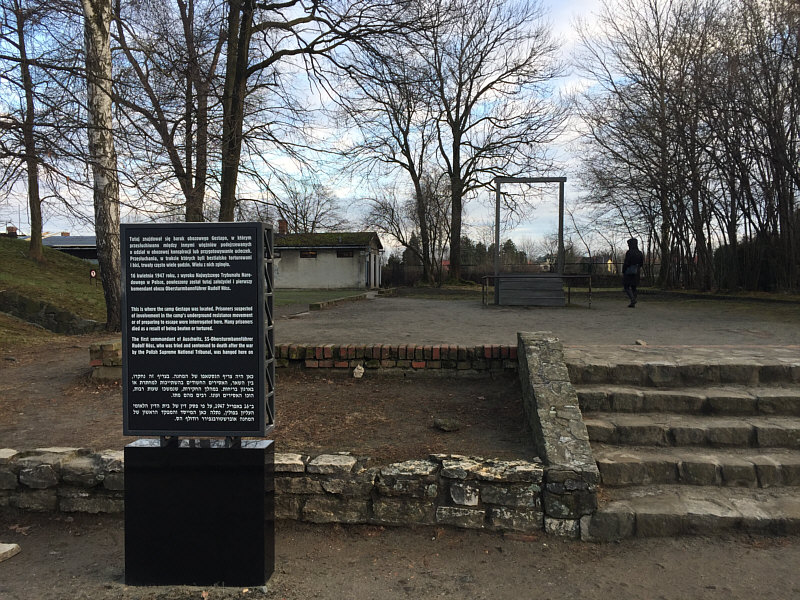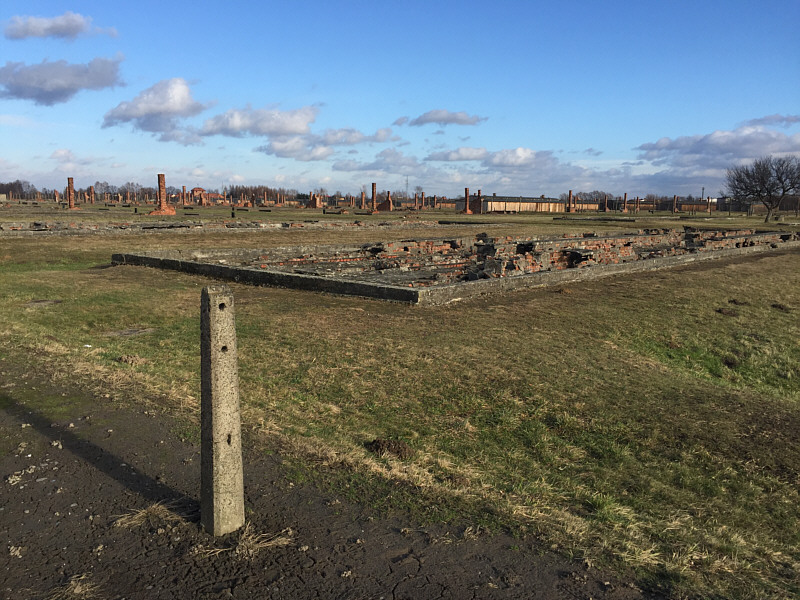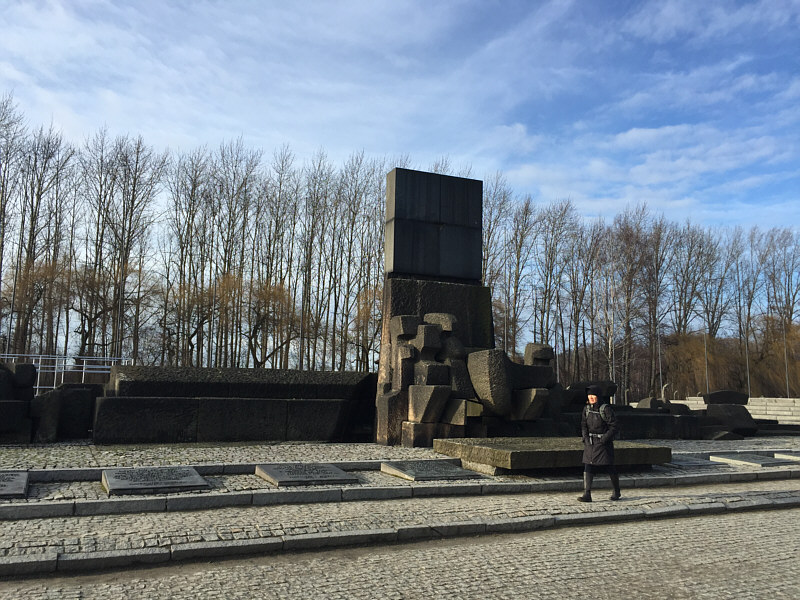 |
At the bus depot in Kraków, Zosia reviews her ticket booking for the first departure of the day to Auschwitz. |
 |
Zosia walks through the infamous gate at Auschwitz I which reads, "ARBEIT MACHT FREI" (Work Sets You Free). The sign over the gate is a replica of the original which was stolen in 2009 but later recovered. |
 |
The weathered sign and barbed wire fence help to exemplify the grimness of the concentration camp. |
 |
The sign reads: "This is where the camp Gestapo was located. Prisoners suspected of involvement in the camp's underground resistance movement or of preparing to escape were interrogated here. Many prisoners died as a result of being beaten or tortured. The first commandant of Auschwitz, SS-Obersturmbannführer Rudolf Höss, who was tried and sentenced to death after the war by the Polish Supreme National Tribunal, was hanged here on" The English translation ends abruptly here, but from the Polish and Hebrew inscriptions, the date of the hanging was 16 April 1947.
|
 |
Zosia stands outside a crematorium in Auschwitz I. |
 |
The Book of Names lists about 4.2 million victims of the Holocaust. Usually, each victim's name is followed by a date of birth, their nationality, and, if known, the location of their murder. |
Despite sunny skies on this day, a chilly wind made it
uncomfortably cool to linger in the openness of Auschwitz II-Birkenau,
and with fatigue starting to set in, we only toured about half of the
site before concluding our visit. Much of the other half of the site
which we did not venture into looked about the same anyway from a
distance, and we did not feel like we missed anything unique. We subsequently returned to Auschwitz I by shuttle bus and stopped at a
nearby restaurant for lunch before catching a late afternoon bus back to Kraków.

Behind Zosia is the infamous gate house of Auschwitz II-Birkenau.
 |
Only the foundations and chimney stacks remain for many of the buildings at Auschwitz II-Birkenau. |
 |
Railroad tracks into the camp were not laid until the spring of 1944 just before a great influx of Hungarian Jews. |
 |
These are the ruins of one of the gas chambers in Auschwitz II-Birkenau. |
 |
A memorial for the murdered victims
stands at the west end of Auschwitz II-Birkenau. At the foot of
the memorial are multiple plaques in different languages which all
read the same following message: "For ever let this place be a cry of despair and a warning to humanity, where the Nazis murdered about one and a half million men, women, and children, mainly Jews from various countries of Europe. Auschwitz-Birkenau 1940-1945" |
 |
The cremated ashes of murdered victims
were dumped into these shallow ponds. The inscriptions read: "To the memory of the men, women, and children who fell victim to the Nazi genocide. Here lie their ashes. May their souls rest in peace." |